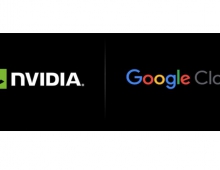
Verizon Beat Out Google in the 700 MHz Spectrum Auction
Bad news Google fans, the search giant wasn't the high bidder in the FCC's recent auction, so it won't be setting up a nationwide wireless network. Instead, Verizon Wireless has gained a large additional chunk of spectrum
Verizon spent $9.63 billion on both its "C" block of the spectrum -- which gives it a nationwide network -- and in winning numerous licenses in the "A" block, which was broken up into small regional sections.
Google only bid on the C block, and so its participation cost it nothing.
It's All About Open Networks
Google has been pushing wireless telecoms to open up their networks, and many had hoped it would become the wireless provider of their dreams, allowing users to get a high-speed connection that would let them to do anything they wanted to for a low cost.
Still, Google's participation in the auction helped push the price for the C block above the point where an "open access" rule went into effect. This will require Verizon to open its new network to any mobile device running any software.
As it turns out though, Verizon had already jumped on the open access bandwagon, announcing late last year that it's going to open its network to "Any Apps, Any Device".
Earlier this week, the telecom released the information companies and developers will need to design products to connect with its network. Any device that meets the minimum technical standard will be activated on the network.
Of course, just because a network is open doesn't mean it's free. Verizon is still going to expect people to pay for accessing its network; it just won't arbitrarily limit the types of devices that can use it, or what users can do with it.
Verizon's goal with this is to see a much wider range of devices getting Internet access through its service. This includes UMPCs and MIDs, as well as special-purpose products like corporate data-collection terminals.
There would be no monthly contracts with these models, but also no device discounts from Verizon.
Actual Networks Not for a Year
Although companies may begin testing and deployment, no networks will actually be operational on the new spectrum at least until April 7, 2009. This is when the analog TV channels that are currently using the 700 MHz spectrum will be shut down and moved to digital spectrum.
Anyone who has used an analog TV should be aware that radio waves in this frequency range travel well over long distances and offer good penetration into buildings.
Google only bid on the C block, and so its participation cost it nothing.
It's All About Open Networks
Google has been pushing wireless telecoms to open up their networks, and many had hoped it would become the wireless provider of their dreams, allowing users to get a high-speed connection that would let them to do anything they wanted to for a low cost.
Still, Google's participation in the auction helped push the price for the C block above the point where an "open access" rule went into effect. This will require Verizon to open its new network to any mobile device running any software.
As it turns out though, Verizon had already jumped on the open access bandwagon, announcing late last year that it's going to open its network to "Any Apps, Any Device".
Earlier this week, the telecom released the information companies and developers will need to design products to connect with its network. Any device that meets the minimum technical standard will be activated on the network.
Of course, just because a network is open doesn't mean it's free. Verizon is still going to expect people to pay for accessing its network; it just won't arbitrarily limit the types of devices that can use it, or what users can do with it.
Verizon's goal with this is to see a much wider range of devices getting Internet access through its service. This includes UMPCs and MIDs, as well as special-purpose products like corporate data-collection terminals.
There would be no monthly contracts with these models, but also no device discounts from Verizon.
Actual Networks Not for a Year
Although companies may begin testing and deployment, no networks will actually be operational on the new spectrum at least until April 7, 2009. This is when the analog TV channels that are currently using the 700 MHz spectrum will be shut down and moved to digital spectrum.
Anyone who has used an analog TV should be aware that radio waves in this frequency range travel well over long distances and offer good penetration into buildings.




















